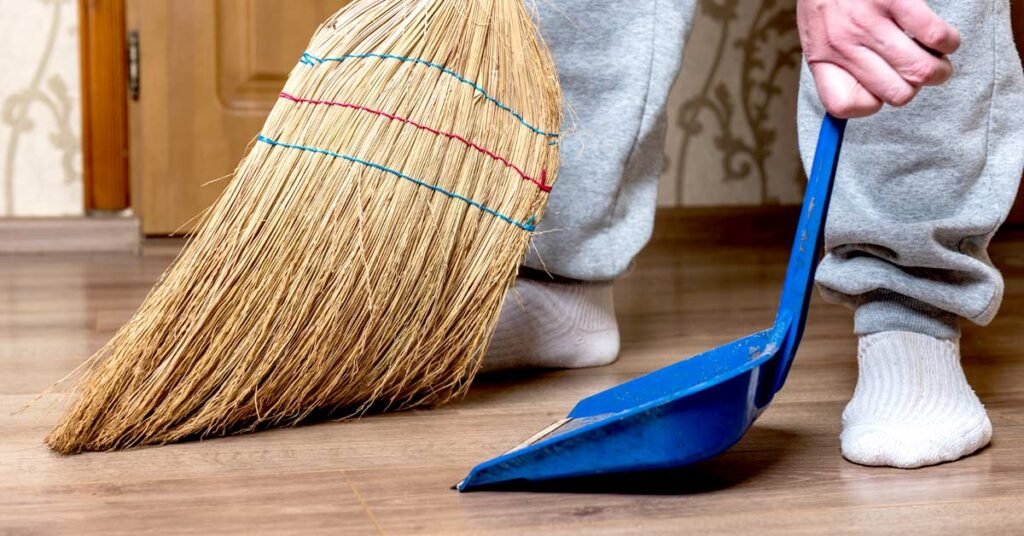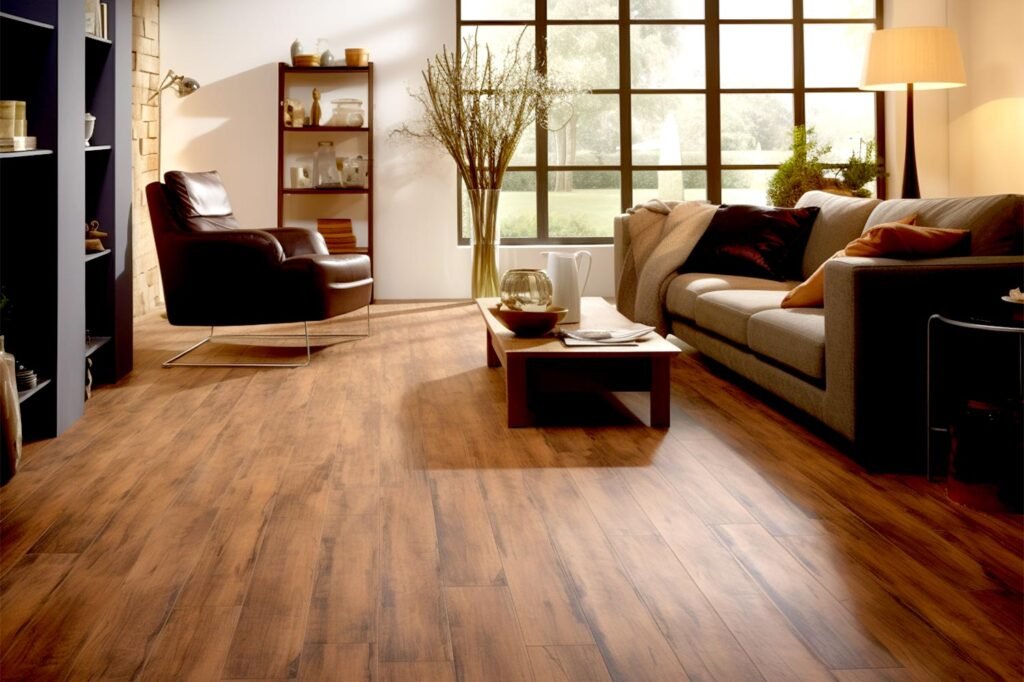In this comprehensive guide, We will try to learn how to clean unsealed wood floors. Unsealed wood floors are prized for their natural beauty and timeless elegance, adding timeless sophistication to any room they grace. However, unlike their sealed counterparts, unsealed floors lack protective layers, leaving delicate fibers of the wood exposed to weather elements; while this enhances the authenticity of its design aesthetic it requires special care in maintaining the integrity of unsealed flooring.
Properly cleaning and maintaining unsealed wood floors is crucial not only to their aesthetic appeal but also to their long-term resilience. Without adequate care, these floors could quickly become dull, stained, or damaged – detracting from their overall beauty in your home or office.
We will dive deep into the complexities of cleaning unsealed wood floors, offering invaluable insights and practical tips to master wood floor maintenance. From understanding unsealed floors’ unique properties to effective cleaning techniques and preventive measures – everything needed to keep them looking their best will be discussed here.
Table of Contents
ToggleWhat Are Unsealed Wood Floors?
Unsealed or raw wood floors possess an exceptional charm and character that set them apart from their sealed counterparts. While sealed floors are coated with protective layers of polyurethane, wax, or oil to preserve their beauty over time, unsealed floors remain natural, allowing the true character of their hardwood to show through.

Preparing for Cleaning
Prior to cleaning unsealed wood floors, it’s vitally important to make the necessary preparations in order to ensure an effective and efficient process. Proper planning not only facilitates deep-cleaning of your floors and surrounding furniture but can also lessen any risk associated with damage to them and surrounding furniture. Here’s what you should do before beginning:
Gather Necessary Supplies:
Before beginning any cleaning task, gather all of the essential supplies and tools you will require for this particular endeavor. This may include items such as:
- Soft-bristled broom or vacuum cleaner: For best results, choose either a soft-bristled broom or a vacuum with a hardwood floor attachment to remove loose dirt, dust, and debris from wood floors.
- Microfiber mop: Select one with a removable, washable pad to damp mop wood floors regularly.
- Mild detergent: Select a mild, pH-neutral detergent specifically made for cleaning wood floors. Avoid harsh chemicals or abrasive cleaners which could harm the wood surface.
- Warm water: Fill up a bucket with warm water so as to dilute your detergent for mopping purposes.
- Soft cloths or towels: Keep soft, lint-free cloths or towels on hand for cleaning up spills and drying the floor after sweeping or mopping.

Before Beginning:
To ensure thorough cleaning of the area, remove any furniture, rugs, or obstacles that might obstruct access. By clearing the space first, it ensures you can reach all areas without obstruction and achieve thorough results.
Protect Surrounding Areas:
Take steps to safeguard against potential water damage or cleaning solution spills by placing plastic sheeting or towels underneath furniture legs and baseboards as a protective barrier, and absorb any extra moisture that accumulates.
By gathering the required supplies, clearing away clutter, and taking steps to safeguard surrounding areas, you’ll be well-prepared to tackle the task of cleaning unsealed wood floors efficiently and effectively. By properly preparing yourself before beginning this task, you can ensure a successful cleaning experience while reducing risk to floors and furnishings alike. Now that we’re underway, let’s dive into the next steps of this cleaning process to discover how you can care for unsealed wood floors like an expert.
Regular Maintenance Schedules
Maintaining an effective cleaning schedule for unsealed wood floors is key to their beauty and integrity, helping protect them against scratches, stains, and damage. Establishing an effective maintenance routine means keeping dirt, dust, and debris off the surface and away from potential sources of scratches, stains or other forms of damage. Here’s how you can establish such an effective routine:
Daily Sweeping or Vacuuming:
It is essential to remove dust, dirt, and debris from wood floors on a daily basis by either using a soft-bristle broom or vacuum cleaner equipped with hardwood floor attachment to sweep or vacuum your hardwood flooring, paying particular attention to high-traffic areas, entryways, or areas prone to spills and messes.
Damp Mopping:
After sweeping or vacuuming, damp mopping can help remove stubborn dirt and grime from wood floors. Fill a bucket with warm water, add a small amount of mild detergent, then dip a microfiber mop into it wring out excess liquid, and move from one end of the room to the other in sections to mop each section thoroughly.
Avoid Excessive Moisture:
When damp mopping unfinished wood floors, take care to use only minimal water when damp mopping. Excess moisture can seep into the wood and cause warping, buckling, and damage over time. Instead, use a damp mop with minimal water and dry your floors thoroughly after cleaning to prevent it from permeating them further.

Preventive Measures
Implementing preventive measures is crucial to protecting unsealed wood floors from damage and maintaining their natural beauty for years to come. By taking proactive steps against wear and tear, preventive measures can extend their lifespan while keeping them in perfect condition for years to come. Here are some preventive measures you should consider:
Implementation:
Area rugs and mats provide a protective barrier between high-traffic areas such as entryways or under furniture and foot traffic on wood floors, helping reduce scratches, dent damage, and wear caused by shoes, pet claws, or furniture movement. Select non-slip backing rugs/mats so they won’t shift or slide around while on the floor.
Avoid Harsh Cleaning Agents:
Avoid harsh cleaning agents such as harsh chemicals, abrasive cleaners, or excessive water when cleaning unsealed wood floors, such as using harsh chemicals, abrasive cleaners, or excessive water as these substances may strip away natural oils and protective layers that shield the wood, leaving it susceptible to damage and deterioration. Instead, opt for pH-neutral solutions specifically formulated for wood floors – and only use sparingly to avoid overexposure.
Regular Maintenance Checks:
Make regular inspections of your unsealed wood floors to detect signs of wear, damage, or discoloration. Keep an eye out for scratches, dents, water stains, and areas of uneven wear to address issues quickly before they worsen further. Consider placing felt pads under furniture legs to reduce scratches and dents, trim pet claws regularly to reduce risk, and use felt pads to protect furniture legs when necessary – both measures could help save further damage to the floor!

Conclusion: How to Clean Unsealed Wood Floors
Mastering the art of cleaning and maintaining unsealed wood floors is essential to their timeless beauty and enhancing your home ambiance. Unsealed wood floors with their natural grain patterns and organic charm add warmth and sophistication to any room; but without proper care and maintenance, they may become damaged over time, losing their shine altogether.
By following the advice in this guide, you can ensure your unsealed wood floors remain in prime condition for years. From understanding their special characteristics to taking preventive care measures effectively and cleaning frequently, this knowledge and tools give you everything necessary for taking great care in caring for them like a pro.
FAQs (Frequently Asked Questions)
Q: Can I use a steam mop on unsealed wood floors?
A: Unfortunately not; steam mops may damage unsealed wood floors by adding too much moisture.
Q: How often should I deep clean unsealed wood floors?
A: Deep cleaning should only be carried out when necessary, such as in instances of persistent stains or water damage, while regular maintenance cleaning may suffice.
Q: Should unsealed wood floors be refinished regularly?
A: Refinishing unsealed wood floors every few years may help restore their beauty and extend their lifespan, but it may not always be necessary depending on their condition.
You might be interested in reading this post as well: Best Blanched Laminate Real Wood Flooring


